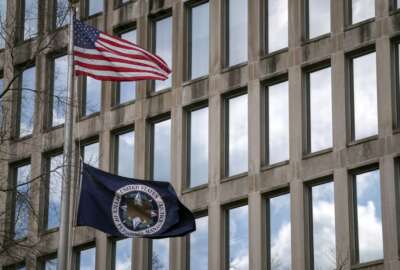
Insight by Cisco
For the federal government, endpoints have left the building
As they transition, Federal agencies must continue to defend against threats on their existing infrastructure while extending that protection to the exploding...
This content is provided by Cisco.
As users of Federal IT transition to remote working, their endpoints are transitioning as well. In a real sense, “users have left the building” and it’s up to your security team to make sure they are protected on any device, wherever and whenever they choose to work. Secure access to your agency’s applications and critical resources will become increasingly critical for your remote workers, whether those tools reside in the public cloud or on-premises behind perimeter security.
The shift to a hybrid work environment
A new approach to organizational operations, consisting of both critical on-site workers and those given the flexibility to telework, is quickly becoming standard for the Federal government. While this change is presenting some unique challenges, it’s also providing unexpected benefits such as reducing operating costs for facilities (lower energy, utilities, and maintenance usage) and reducing travel expenses. This savings can be used to help offset costs related to deploying and securing their growing remote workforce.
As they transition, Federal agencies must continue to defend against threats on their existing infrastructure while extending that protection to the exploding number of remote endpoints connecting to their networks. That’s why Cisco has brought our industry-leading security solutions together to help protect government users regardless of where they are located – whether at the office, at home, in their car, or in-transit. And it’s all backed by Cisco’s decades of experience as a reliable and trustworthy partner with government.
How to secure remote workers
Cisco Secure Remote Worker is a simple, scalable, integrated security solution that delivers the strength and breadth of Cisco’s platform approach to protect your workforce everywhere. It brings together our most trusted and proven security solutions to secure government teleworkers, including:
- FedRAMP Authorized Cisco Duo for multi-factor authentication
- Cisco Advanced Malware Protection (AMP) for Endpoints
- Cisco Umbrella for roaming protection on and off your agency’s VPN
- Cisco AnyConnect Mobility Client (VPN) for secure access to the enterprise network for any user, from any device, at any time, in any location.
Multi-factor Authentication
Duo uses multi-factor authentication to secure access to government data and critical systems. It lets agencies verify users’ identities and establish device trust before granting access to applications and data. By employing a Zero Trust model, Duo decreases the attack surface and reduces risk by helping to define and enforce policies that limit access to the users and devices according to a Federal agency’s risk tolerance levels.
Duo offers two FedRAMP Authorized, FIPS-compliant product editions: Duo Federal MFA and Duo Federal Access. Both are tailored to meet the strict security requirements of federal agencies and public sector organizations through strong, cloud-based authentication and device visibility.
Advanced Malware Protection for Endpoints
For Federal agencies, Cisco Advanced Malware Protection (AMP) for Endpoints helps to stop attacks while simplifying security operations. It offers cloud-delivered next-generation antivirus, endpoint protection platform (EPP), and advanced endpoint detection and response (EDR). AMP for Endpoints boosts your endpoint security by blocking attacks and helping your agency respond to threats quickly. Plus, it can stop ransomware before it completely encrypts your endpoints and it can block threats in memory and browser injections that other solutions miss.
Roaming Protection
Cisco Umbrella Roaming protects government users when they are off the enterprise VPN. It blocks malicious domain requests and IP responses while DNS queries are resolved and enforces security at the DNS layers so malicious connections cannot be established, or dangerous files downloaded. Cisco Umbrella protects government’s remote users from malicious Internet destinations whether they are on the enterprise VPN an even when they’re roaming off the network.
Work Securely from Home
Cisco AnyConnect Secure Mobility Client empowers remote working from anywhere on government laptops or mobile devices; whether connected to the enterprise or when needing roaming DNS protection. It also provides visibility and control for Federal agency enterprise operators and security teams to identify who (what devices and the compliance status of those devices) is accessing the enterprise infrastructure.
For more information about how Cisco can help your government organization keep remote workers secure, visit Cisco Secure Remote Worker.
Copyright © 2025 Federal News Network. All rights reserved. This website is not intended for users located within the European Economic Area.




